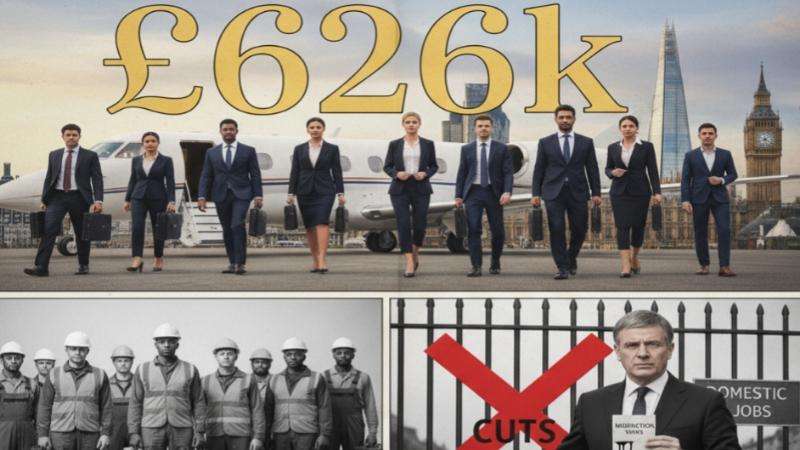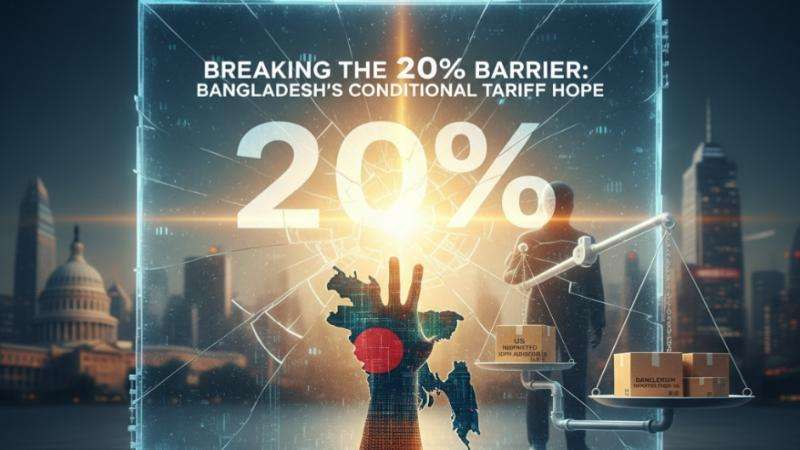Dhaka's Next Trade Target: Can Bangladesh Get US Tariff Below 20%? Bangladesh is pressing the United States for a further reduction in the recently imposed reciprocal tariff, a move that could significantly boost its vital export sector. National Security Adviser and High Representative for the Rohingya issue, Dr. Khalilur Rahman, formally made the request to Assistant US Trade Representative (AUSTR) Brendan Lynch during a high-level dialogue in Washington D.C. on Friday.
The Tariff Conundrum: From 37% to a Target of 15%
The current diplomatic push seeks to build on a prior success where Bangladesh negotiated the tariff down to 20%, effective August 1, 2025, from the initial proposal of 37% (later adjusted to 35%). This initial reduction was secured through intense negotiations and a commitment by Dhaka to narrow the significant trade imbalance by increasing imports of US products, including agricultural goods, energy supplies, and aircraft.
During Friday's meeting, Dr. Rahman reiterated Bangladesh's commitment to reducing the trade gap and requested Mr. Lynch to consider an even deeper tariff cut, with Dhaka reportedly aiming for a rate closer to 15%.
AUSTR Lynch’s response offered a cautious but open door, assuring "full consideration" of the matter. Crucially, this consideration is directly conditioned on the successful implementation of the existing tariff agreement and, more importantly, tangible progress in reducing the bilateral trade gap between the two countries. The final decision is unlikely to be made until measurable data confirms Bangladesh's follow-through on its import pledges and the current 20% tariff has been operational for a period sufficient for a review. Trade analysts suggest a decision could be expected in the first or second quarter of 2026, following a comprehensive review of the Q4 2025 and Q1 2026 trade data.
A Broadened Bilateral Dialogue-The trade talks were part of a wider diplomatic engagement. Dr. Rahman, accompanied by the new Bangladesh Ambassador to the US, Tareq M Ariful Islam, also held separate meetings with other senior US officials, including Under Secretary of State for Political Affairs Allison Hooker.
In the meeting with Under Secretary Hooker, the US side reaffirmed its strong support for the leadership of Chief Adviser Professor Muhammad Yunus and the steps taken by the interim government toward the upcoming elections in February next year.
Beyond political alignment, the officials also addressed regional security matters. Under Secretary Hooker expressed support for Bangladesh’s efforts to resolve the Rohingya issue, while Dr. Rahman conveyed gratitude for the US's recent pledge of $60 million in aid for the displaced population at the UN International Conference on the Rohingyas. Dr. Rahman also discussed a broad range of bilateral issues in separate meetings with Principal Deputy Assistant Secretary Nicole Chulick and Deputy Assistant Secretary Andrew Herrup.
Will Bangladesh Get the Deeper Cut?
The possibility of a further tariff reduction for Bangladesh is conditional but realistic. The US administration's focus on reciprocal tariffs as a tool to address trade deficits means the reduction is intrinsically tied to Dhaka's demonstrated success in increasing US imports.
Bangladesh’s strategy is a proactive blend of foreign policy and trade negotiation: it is leveraging its cooperation on key US interests—such as its commitment to holding credible elections, political stability under the interim government, and assistance with the Rohingya crisis—to create an enabling environment for securing better trade terms. The ultimate decision on a lower tariff will rest on data showing a verifiable reduction in the US-Bangladesh trade imbalance.



_3.jpg)
_4.jpg)


.svg)
